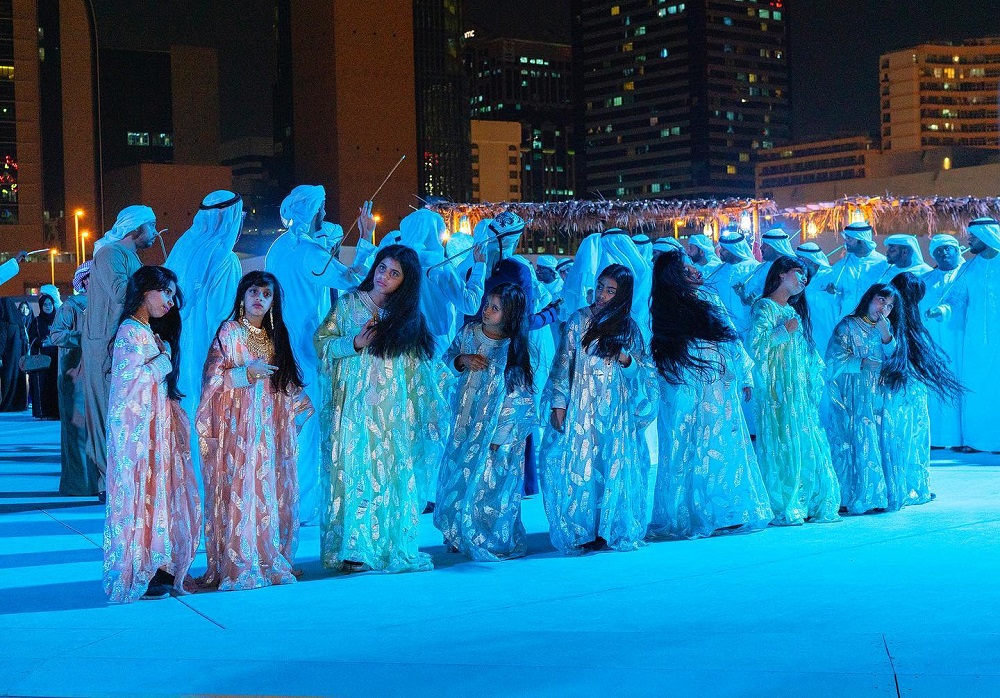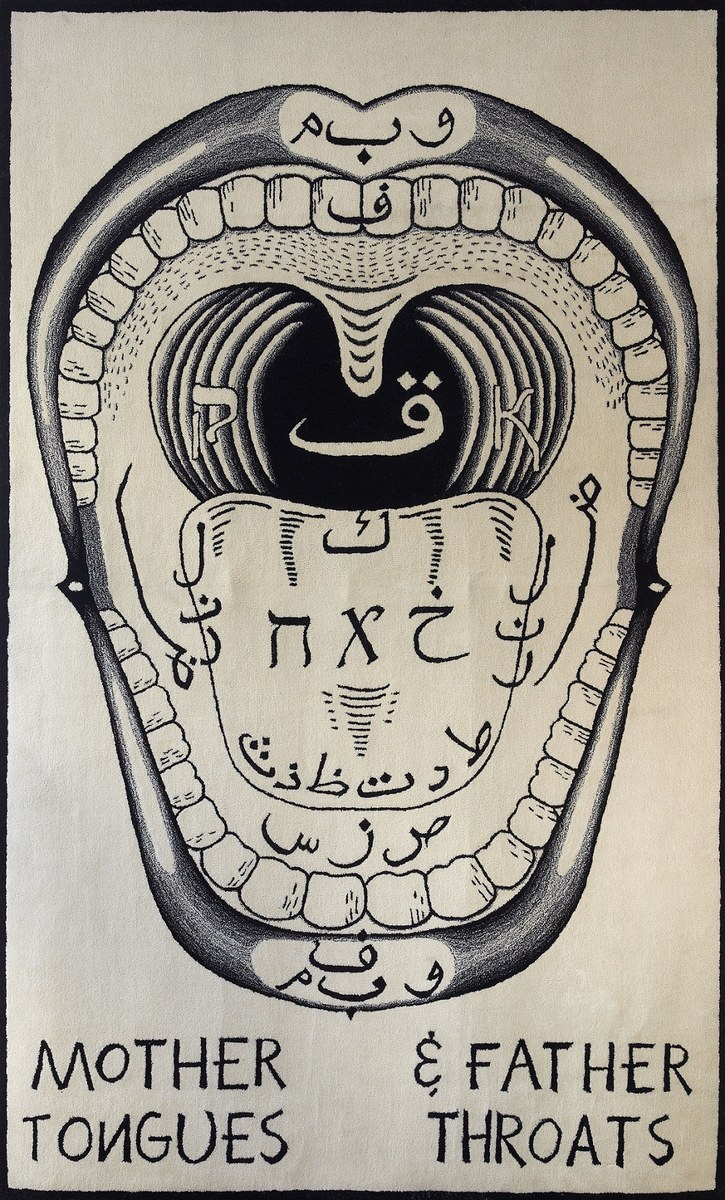Life Style: Saudi artist’s ‘The Teaching Tree’ symbolizes Kingdom’s great change

HELSINKI: Two years after being forced to close because of pandemic restrictions, Helsinki’s Museum of Contemporary Art Kiasma has reopened in the Finnish capital with a newly renovated interior and a sprawling exhibition that fills the building’s five floors.
“ARS22 — Living Encounters” brings together contemporary visual art, performances and films from local and international artists in a wide-ranging exhibition that will run until Oct. 16, 2022.
ARS, a series of major international contemporary art exhibitions, was first conceived in 1961 and was held at the Ateneum museum in Helsinki. ARS22 is the 14th exhibition in the series and the 10th to be held in the Museum of Contemporary Art Kiasma. In total, the exhibitions have had more than a million visitors and presented work by about 600 artists or groups.
Since its opening 61 years ago, the gallery has addressed major issues around the world, and this year’s edition continues the tradition.
As well as 15 commissions produced exclusively for the show, works by 55 artists from 26 countries, including Iraq, the UAE, Australia and Mexico, explore the exhibition’s themes of coexistence, our relationship with the world, and the challenges facing the planet and humanity.
“The idea behind ARS22 was to build an entity where multiple voices would coexist together. To create a museum as a platform for encounters, we curated an exhibition where many narratives, instead of one linear storyline, would exist,” said Piia Oksanen, who curated the exhibition alongside museum director Leevi Haapala, chief curator for exhibitions Joao Laia, and a team including her twin sister Satu Oksanen, Saara Hacklin, Kati Kivinen, Patrik Nyberg, Jonna Strandberg and Jari-Pekka Vanhala.
“This is why invitations were sent to artists from different backgrounds, from different geographical areas, working with a variety of media,” she said.
According to Oksanen, “there is growing interest in artists from the Arab world.”
Several artists from the Middle East were invited to take part in ARS22, including Kholod Hawash, a self-taught textile artist from Iraq; Farah Al-Qasimi, an Emirati visual artist; Michael Rakowitz, an Iraqi-American multidisciplinary artist; and Slavs and Tatars, a collective of unnamed artists founded in 2006 by a Polish-Iranian duo.
Al-Qasimi told Arab News that “it’s always great to be able to show work in new environments. Survey shows are exciting because of the dialogues they propose between artists who work in different ways.”
The Abu Dhabi-born artist is known for her color-saturated photographs, many of which are on display on the museum’s second floor.

Al-Qasimi’s work, which features images of a woman watching anime on her iPhone, butterflies sitting on an orange slice, and an injured falcon being treated at a hospital, was brought to the exhibition by the chief curator Laia, who invited the artist to do a studio visit while she was in quarantine last November.
“You have to witness the works one at a time,” Al-Qasimi said.
The NADA Artadia Prize winner is known for her beguiling portraits depicting materialism and gender relations in the UAE.
“The work in the exhibition is part of my research on ideas of paradise in contemporary culture; specifically, in religion, and in the leisure and entertainment industries,” she said.
“There are references to the small ways that people try to embody their own versions of idealism in day-to-day life, through shopping, nature or worship. It’s joyful, but also a little critical at times.”
Also on show on the museum’s second floor is work by art collective Slavs and Tatars.
This year’s edition of the exhibition is the first to include works from previous shows.
“We’re thrilled to have our work included in the first iteration to include works from past decades, given that Slavs and Tatars was conceived, in part, to counter the amnesiac emphasis on the new, the present, the actual,” the artists said.
The group set up a carpeted seating area that is a cross between a rahle, a reading stand for religious texts, and the takht, a space for sitting and conversing in traditional teahouses. Titled “PrayWay,” the installation is also a reference to the flying carpets of Middle Eastern fairy tales such as “Aladdin” and an example of the group’s interactive work — a space to sit, chat and connect with others.

Adjacent to the silk and wool carpet is a five-meter-tall hanging carpet titled “Mother Tongues, Father Throats” that depicts a diagram of the mouth showing which parts are responsible for pronunciation of the letters of the Arabic alphabet. In the middle (the throat), the artists added the Hebrew and Cyrillic equivalents for the Arabic “kha” and “qaf,” which are not present in the Western language, and mark a clear boundary between East and West.
“We’re interested in redeeming the other organs of language, be it the throat or the nose, often eclipsed by the tongue,” the art collective said. “Alphabets are eminently political vehicles. We tend to imagine them as innocent, but Latin, Cyrillic and Arabic each accompanied imperial projects.”
Meanwhile, two floors above hang colorful patchwork quilts from Basra-born Hawash, now based in Helsinki and known for her handmade textile pieces sewn using a traditional Iraqi technique.
The artist taught herself how to sew after watching her mother make patchwork quilts by sewing discarded scraps of material together by hand.
According to Hawash, sanctions on Iraq at the time meant textiles and fabrics were scarce, so Iraqis had to use old clothing and materials drawn from the house in order to stitch their “jodaleia,” the Arabic term for traditional handmade Iraqi quilts.
Three of her striking works occupy the fourth floor of the museum.

Hawash and her husband, Saddam Jumaily, an Iraqi painter and sculptor, sought refuge in Amman because of persecution before relocating to Finland with the help of Artists at Risk. The exiled artists were the first AR-ICORN Safe Haven Helsinki residents.
“I was threatened many times for not wearing a hijab,” Hawash said, standing next to a quilt depicting a woman cutting her hair.
“In our culture, many women cut their hair as a form of resistance and a way to distance themselves from the ‘weaker sex,’” she said.
In addition to being beautiful, Hawash’s textiles address political decay, social and economic justice, the refugee issue and migration, religious freedom and other humanitarian issues.
She also draws inspiration from Iraqi folklore, with figures of goats, fish, birds and horses featuring in her embroidered work.
“It is relevant to look outside the Western world, and acknowledge how histories and present concerns are entangled,” said Oksanen on the decision to include Middle Eastern artists and works in the exhibition.
Indeed, there is an endless amount of sophisticated and thought-provoking works from the Arab world and it is time that dedicated spaces are made available for them.
Noting that the news was copied from another site and all rights reserved to the original source.
xnxx,
xvideos,
porn,
porn,
xnxx,
Phim sex,
mp3 download,
sex 4K,
Straka Pga,
gay teen porn,
Hentai haven,
free Hentai,
xnxx,
xvideos,
porn,
porn,
xnxx,
Phim sex,
mp3 download,
sex 4K,
Straka Pga,
gay teen porn,
Hentai haven,
free Hentai,




